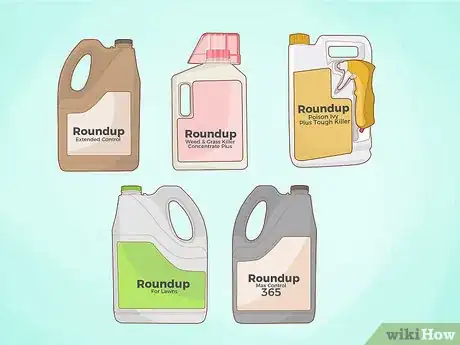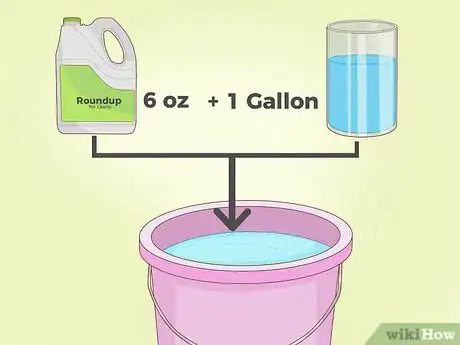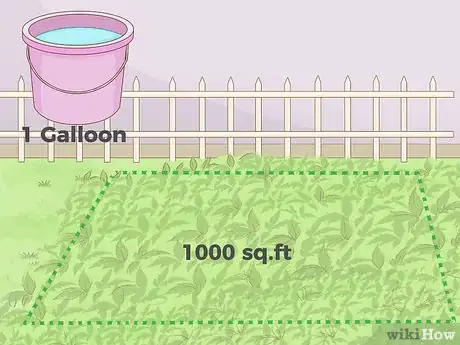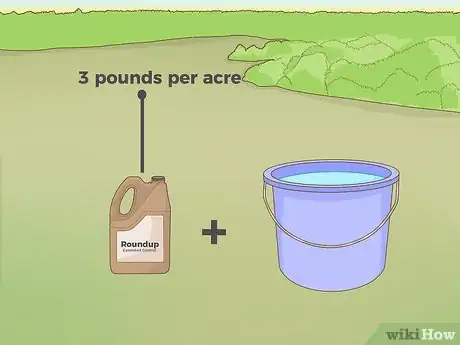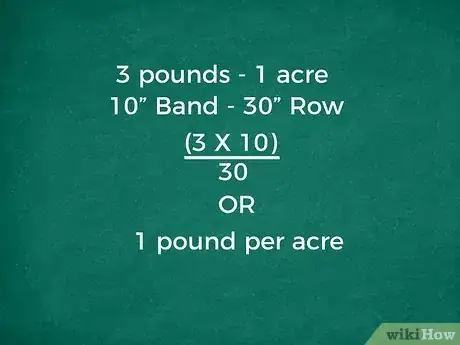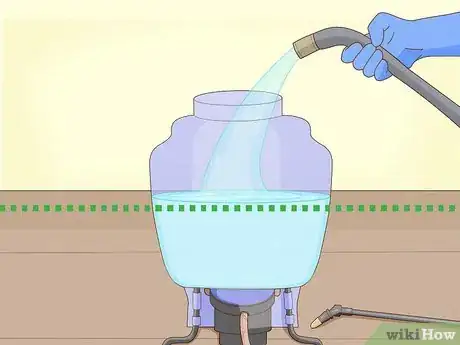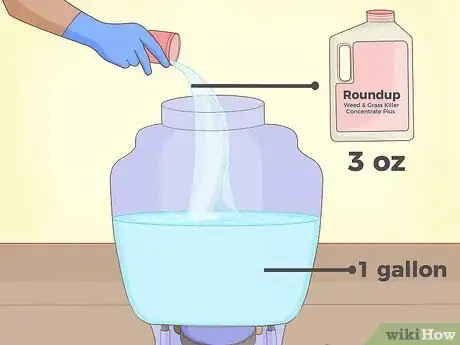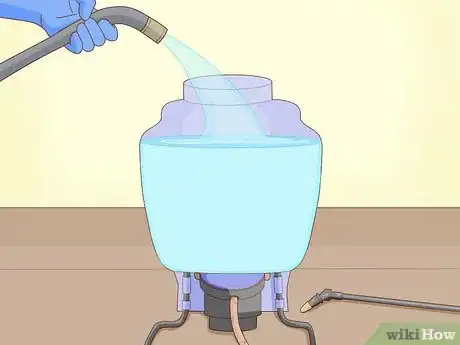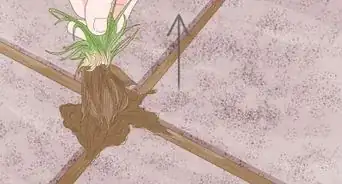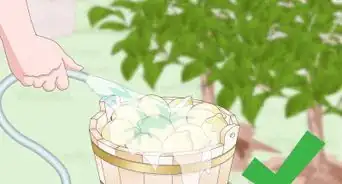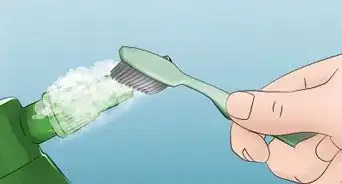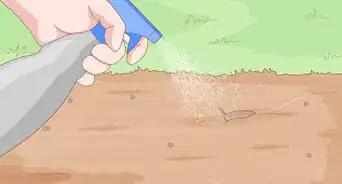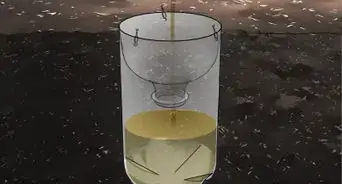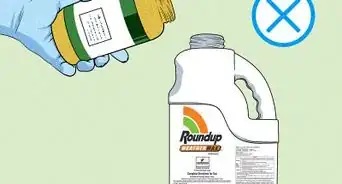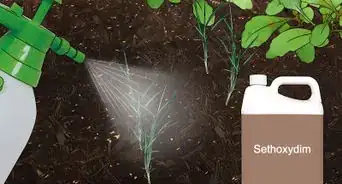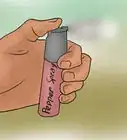This article was co-authored by wikiHow Staff. Our trained team of editors and researchers validate articles for accuracy and comprehensiveness. wikiHow's Content Management Team carefully monitors the work from our editorial staff to ensure that each article is backed by trusted research and meets our high quality standards.
There are 7 references cited in this article, which can be found at the bottom of the page.
This article has been viewed 28,388 times.
Learn more...
Roundup is a glyphosate-based herbicide that is used to kill weeds, especially the grasses and broadleaf weeds that cause trouble for crops. Whether you want to use Roundup on your lawn or crop, you need to learn how to properly mix it to get the most out of it. Just select the best Roundup product from the options available to you, mix it into a tank sprayer with water, and start killing weeds to pave the way to a nice lawn or crop.
Please note: The WHO considers glyphosate to be a probable human carcinogen. Its use is prohibited in some states and countries. Please check with your local laws and use caution if handling this chemical.
Steps
Choosing the Right Product and Amount
-
1Choose a Roundup product formula for your crop or lawn. Different Roundup products work best on different kinds of terrain. Be sure to look at the manufacturer's instructions and labels and select one that matches your needs.[1]
- All Roundup products are suitable for driveways, patios, and gravel.
- Select Roundup Extended Control Weed & Grass Killer Plus and Roundup Weed & Grass Killer Concentrate Plus for use on tree rings and mulch beds.
- Use Roundup Poison Ivy Plus Tough Brush Killer for poison ivy and woody brush.
- Try Roundup Max Control 365 products for fence lines and foundations.
- Choose Roundup for Lawns for yard application.
-
2Use up to 6 oz (170 g) of Roundup per 1 US gal (3.8 L) of water for small crops. For smaller crops, you can use Roundup in amounts from 2.5 ounces (71 g) to 6 ounces (170 g) per 1 gallon (3.8 L) of water. Always check the manufacturer's directions and note the necessary Roundup amount in ounces (or grams).[2]
- Roundup Concentrate Max Control 365, Roundup Concentrate Extended Control Weed & Grass Killer Plus Weed Preventer, and Roundup Concentrate Poison Ivy Plus Tough Brush Killer require 6 ounces (170 g) of product per 1 gallon (3.8 L) of water.
- Roundup Weed & Grass Killer Super Concentrate requires 2.5 ounces (71 g) or 1.5 ounce (43 g) per 1 gallon (3.8 L) of water.
- Roundup Weed & Grass Killer Concentrate Plus requires 6 ounces (170 g) or 3 ounces (85 g) per 1 gallon (3.8 L) of water.
Advertisement -
3Use 1 gallon (3.8 L) of Roundup per 1,000 square feet (93 m2). For example, if your yard is 2,000 square feet (190 m2), you need 2 gallons (7.6 L) of herbicide solution. For Roundup Concentrate Poison Ivy Plus Tough Brush Killer, which requires 6 ounces (170 g) of product per 1 gallon (3.8 L), use 12 ounces (340 g) of Roundup in total (6 x 2).[3]
- Calculate the square footage of your crop or yard by multiplying its length and width.
- Roundup Concentrate Max Control 365, Roundup Concentrate Extended Control Weed & Grass Killer Plus Weed Preventer, and Roundup Concentrate Poison Ivy Plus Tough Brush Killer require 6 ounces (170 g) of product per 1,000 square feet (93 m2).
- Roundup Weed & Grass Killer Super Concentrate requires 2.5 ounces (71 g) or 1.5 ounce (43 g) of product per 1,000 square feet (93 m2).
- Roundup Weed & Grass Killer Concentrate Plus requires 6 ounces (170 g) or 3 ounces (85 g) of product per 1,000 square feet (93 m2).
-
4Divide the acid equivalent value by the pounds per gallon value for large areas. If your Roundup doesn't list the amount of herbicide to use per 1 acre (4046.86 meters squared), you need to calculate it yourself. Divide the acid equivalent (a.e) amount by the amount of the product in pounds per gallon listed on the label. For example, if the a.e. is 3 pounds (1.4 kg) per 1 acre (4046.86 meters squared) and there is 2 pounds (0.91 kg) per 1 gallon (3.8 L), 3 pounds divided by 2 pounds is 1.5 gallons (5.7 L) per acre—the amount of product you need.[4]
- If you're covering a small area or your Roundup product lists the amount of the herbicide formulation you need to use in pounds per acre, skip this step and start filling your tank sprayer.
-
5Use the pounds per acre value to calculate the herbicide amount for large crops. Herbicides can be applied either uniformly over the surface of the field (broadcast) or in narrow strips centered over rows (bands). If you're applying Roundup by broadcast, take the application rate at face value. For bands, multiply the broadcast rate by the width of the band and then divide the total by the width of the row.[5]
- Consider a Roundup that has a broadcast application rate of 3 pounds (1.4 kg) per acre: if you need to apply your herbicide in 10 inch (25 cm) bands over 30 inch (76 cm) rows, the band application rate is (3 x 10) / 30, or 1 pound (0.45 kg) per acre.
Filling Your Tank Sprayer
-
1Fill up the tank sprayer halfway with water. Smaller tank sprayers typically hold 1 to 2 gallons (3.8 to 7.6 L) of water. For example, if you're planning to use 1 gallon (3.8 L) of water and Roundup solution, fill your tank to 0.5 gallon (1.9 L) with a garden hose.[6]
- Avoid using low-temperature water, which causes herbicide buildup at the bottom of the tank.
- Always double check manufacturers directions and pour the amount of water recommended for the amount of Roundup product your using.
-
2Add your Roundup to the tank in the appropriate amount. Note your calculated amount of Roundup for larger areas or look at the bottle for the manufacturer's directions for smaller areas. Now, add this amount of Roundup per 1 gallon (3.8 L) of water.[7]
- Consider a yard that is 1,000 square feet (93 m2): if you're using Roundup Weed & Grass Killer Concentrate Plus, use 3 ounces (85 g) per 1 gallon (3.8 L) of water—1,000 square feet (93 m2)—for easy-to-kill weeds.
-
3Top off your tank sprayer with water. After adding your herbicide, fill the tank up full of water with a garden hose. Be sure to double check manufacturers directions to make sure there are no special instructions for water levels.[8]
-
4Mix the herbicide and water with the plunger. Insert the vertical tubing of the plunger into the hole of the tank sprayer. Once the plunger is completely inside the tank, grip the handle, turn it to the left, and pull it up and down to complete 1 pump. Continue this process until you complete 10 to 15 pumps to mix the Roundup and water. After the final pump, turn the handle to the right to lock it into place.[9]
- The process of mixing your herbicide and water is called agitation. Be sure to check the manufacturer's instructions for any specific guidelines or pumping recommendations.
Warnings
- Call the poison control center immediately if you swallow Roundup.⧼thumbs_response⧽
- If Roundup touches your skin, rinse it immediately with water for 15 to 20 minutes.⧼thumbs_response⧽
- If you get Roundup in your eyes, hold them open and rinse them with water for 15 to 20 minutes. If you're wearing contacts, remove them after the first 5 minutes of rinsing your eyes with water and then continue rinsing.⧼thumbs_response⧽
References
- ↑ https://www.roundup.com/en-us/library/using-roundup-weed-grass-killer-products-properly/where-can-i-use-roundup-weed-grass-killer
- ↑ https://www.roundup.com/en-us/library/using-roundup-weed-grass-killer-products-properly/where-can-i-use-roundup-weed-grass-killer
- ↑ https://www.roundup.com/en-us/library/using-roundup-weed-grass-killer-products-properly/where-can-i-use-roundup-weed-grass-killer
- ↑ https://extension.umn.edu/herbicides/how-calculate-herbicide-rates-and-calibrate-herbicide-applicators#amount-to-put-in-the-tank-1032912
- ↑ https://extension.umn.edu/herbicides/how-calculate-herbicide-rates-and-calibrate-herbicide-applicators#herbicide-per-acre-1032911
- ↑ http://www.monsanto.ca/products/documents/roundup_transorb_en.pdf
- ↑ https://www.roundup.com/en-us/library/using-roundup-weed-grass-killer-products-properly/how-do-i-use-roundup-weed-grass-killer
- ↑ https://youtu.be/cKMLG7qy-rs?t=80
- ↑ http://www.pbmsprayers.com/ag/pdf/tips/agitation.pdf
